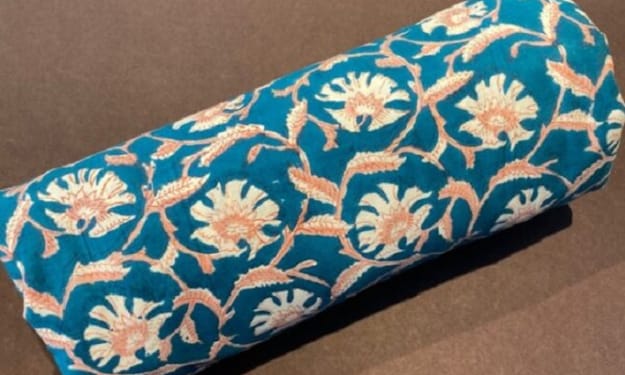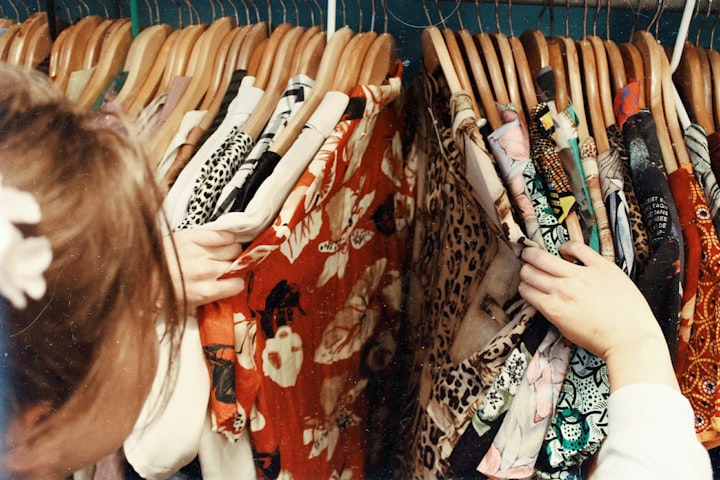21 Type of Sarees in India
Let us check out the various kinds of sarees in India which add up elegance into the Indian Heritage.

The saree is profoundly entrenched in India's style history and plays a significant part in its own heritage. These two lawns of sophistication differ from state to state in India.
The Annals Of Sarees In India
The saree has existed for at least 6000 decades. It's thought to have evolved by a three-piece garment composed of unstitched parts of cloth referred to as a lower garment, a torso ring, and a bit worn on the shoulder or head.
The saree afterwards became the one stretch of fabric that did all of this at the same time. Skilfully pleated at the waist to make it easy to walk, the saree consequently became an essential part of Indian background different kinds of sarees material across India.
Different Kinds of Sarees
1. Assam Silk Saree
Assam silk sarees are created with silk got in the domesticated multivoltine silkworm, Antiheroes assamensis. There are 3 key kinds of Assam wild silks -- Golden Muga silk, White Pat silk, and Eri silk.
2. Banarasi Silk Saree
Banarasi sarees are produced in the gorgeous town of Varanasi, which can be called Benaras or Banaras. These sarees are famous for their abundance and grandeur. Using their glorious embroidery done with silver and gold zari on silk, they're a must-have on your wardrobe.
3.Chanderi Saree
Chanderi sarees are created in pure silk, Chanderi cottonsilk and silk cotton. These saris are of the best quality and famous for their silver and gold zari, fine silk, and earthy richness.
Material: Cotton and cotton
4.Sambalpuri Saree
Sambalpuri sarees are hand-woven ikat sarees made together with all the tie-dye method. They're famous for their geometric patterns and themes likeshanka (shell), chakra (wheel), and blossoms.
5.Kasta Saree
Kasta or Kaashthasarees would be the conventional nine-yard Maharashtrian sarees which are known for their draping style. They're draped in a dhoti-style called Navvari, meaning'nine-yards.'
6.Chiffon Saree
The chiffon cloth could be traced far back to the 1700s in Europe. Though this cloth isn't originally from India, chiffon sarees are the rage for quite a very long time now as they're often worn by actresses from Bollywood films.
Substance: Cotton fiber, nylon, and polyester
7. Georgette Saree
Georgette is a sheer, lightweight, dull-finished crêpe cloth. It's distantly related to chiffon, but it's a bit more crinkly and famous for its elastic and easy-wearing skills.
8. Kosa Saree
Kosa silk is obtained in the Indian silkworm and has been a variety of Tussar silk. It's famous for its sturdiness and is favored over pure silk in Chhattisgarh. This silk is obviously dyed with all the palaas blossom, the red pollen of this rora blossom, the darkish rose-red out of lac, along with other all-natural colours.
Material: Cotton, cotton, and polyester
9. Net Saree
Web sarees began trending a couple of decades before, but the internet cloth has been used for centuries now. The source of the fabric remains cloudy, but it's been traced back to ancient India in addition to western cultures. It was originally used for wedding dresses and dresses and later updated to sarees.
Material: Cotton, synthetic polyamides, nylon, and silk
10.Bandhani Saree
Bandhani or Bandhej sarees possess a special appeal of their own. Made with all the tie-dye method, the bandhani saree is generally found in vivid and vibrant colours. It's normally colored by hand and with organic colours.
Fabric: Cotton, cotton, cotton silk, chiffon, and georgette
Originally from: Ahmedabad, Kutchh, Saurashtra, Rajasthan, plus a few elements of Uttar Pradesh
Attire from: Gujarat
11. Kasavu Saree
Kasavu sarees (also called Kerala sarees) are famous for their glossy beauty. The base colour changes from multicolored to beige, and the edge has a good colour and gold zari design. Majorly worn for Onam festival, the Kerala saree has become famous worldwide.
Material: Cotton, cotton, and chiffon
Originally from: Kuthampully and Mysore
Attire from: Kerala
12. Patola Saree
Patola sarees would be the double ikat patterned sarees which are created in Gujarat. It requires approximately four to six weeks to weave one Patola saree, making it incredibly pricey.
Material: Silk
Originally from: Patan,Lalitpur
Attire from: Gujarat
13. Kanjeevaram Saree
Kanjeevaram or Kanchipuram is the Best silk in India. Kanjeevaram sarees would be the patent bridal wear South India because they're abundant, regal and full of stunning zari work.
Material: Silk
Originally from: Kanchipuram
Attire from: Tamil Nadu
14. Kalamkari Saree
Kalamkari sarees are magnificent hand-painted sarees created in Andhra Pradesh. Kalamkari artwork is done on silk or cotton with a tamarind pencil and organic color dyes. The term kalamkari comes from the Persian phrase kalam (meaning'pencil') and kari(meaning ability ).
Material: Cotton and cotton
Originally from: Telangana
Attire from: Andhra Pradesh
15. Paithani Sarees
The magnificent Paithani saree out of Maharashtra is famous for its gold zari richness and peacock themes all around the pallu. Paithani sarees can be found in kaleidoscopic colors (Dhoop-Chaav colors ) which include grandeur to the apparel.
Material: Silk
Originally from: Paithan
Attire from: Maharashtra
16. Muga Saree
The Muga saree is a version of Assam silk saree. It's created only in Assam and nowhere else. Muga is traditionally utilized to create a apparel named Mehelka Sadar -- a conventional Assamese saree.
Material: Silk
Originally from: Sualkuchi, Guwahati
Attire from: Assam
17. Puttapaka Saree
Puttapaka sarees are a more sophisticated and close-knitted model of ikat sarees. With much more intricate geometric design, Puttapaka sarees possess a gorgeous charm without undermining its own aesthetic.
Material: Cotton and puttapaka cotton
Originally from: Nalgonda
Attire from: Telangana
18. Phulkari Sarees
Phulkari literally translates to'blossom work' and it originated from Punjab.Phulkari sarees are worn by girls in Punjab during festivals, weddings, and other parties. With its vibrant colours and uniform floral designs, the embroidery of Phulkari sarees is a treat for the eyes.
Material: Cotton and cotton
Originally from: Peshawar, Jhelum, Amritsar, Jalandhar, Ambala, and Ludhiana
Attire from: Punjab
19. Bhagalpuri Sarees
Bhagalpuri sarees have been famous for their distinctive and striking silk. The silk is obviously dyed with vegetable colours and acid dyes which add to the allure of this saree. The ease of this saree makes certain it stands out in a bunch.
Material: Silk
Originally from: Bhagalpur
Attire from: Bihar
20. Bomkai Sarees
Bomkai sarees are created in Odisha. Bomkai (also referred to as Sonepuri ) is an outstanding fabric in cotton and silk, which can be woven to a pit . The boundaries are often done in contrasting colours and the pallu is full of intricate threadwork.
Material: Cotton and cotton
Originally from: Bomkai, Subarnapur
Attire from: Odisha
21. Dhakai Saree
The dhakai saree is most frequently called Dhaka-Jamdhani. This saree has multiple designs and themes, each representing a variety of items like fertility, growth, and marital bliss.
Material: Cotton
Originally from: Dhaka
Attire from: Bangladesh
About the Creator
Moksha Sharma
My name is Moksha Sharma, I have been a writer and a seasoned content marketer. I like to write about Business/Health/Marketing etc.






Comments
There are no comments for this story
Be the first to respond and start the conversation.